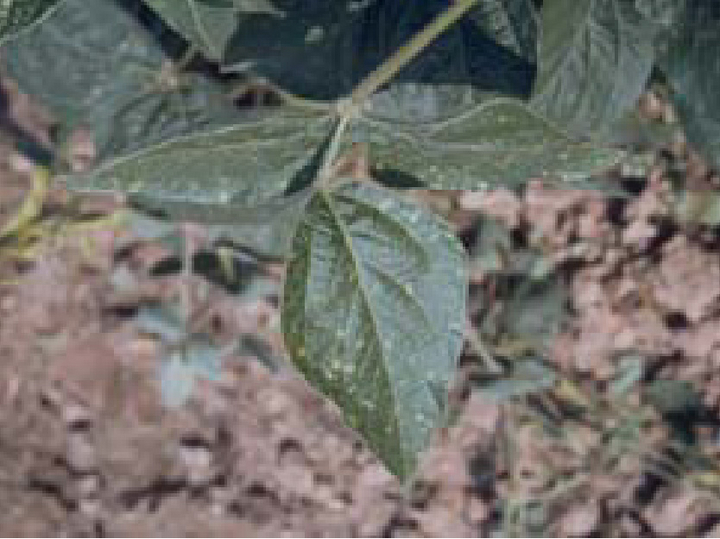Soybean downy mildew
Peronospora manshurica
Damage symptoms

On the upper sides of the leaves, small, light to light yellow spots can be seen at first, which are between 2 and 8 mm in size. The spots enlarge, are irregular in shape and size, and eventually merge. The infested leaves wilt and die. On the undersides of the leaves, a grayish-purple sporangia can be seen on the dead tissue.
Pods can also be infested, but no symptoms can be seen on them externally. On seeds within pods, downy mildew develops on the seed surface and forms a milky white crust consisting of the surviving spores (oospores). Plants that grow from infected seeds remain small, are stunted, and soon die.
Propagation and transmission
The pathogen is usually transmitted with the seed, but can also survive on infected plant residues in the soil in the form of permanent spores. In the stand, downy mildew is spread by sporangia spread by wind and water droplets.
High humidity and cooler temperatures promote disease development.
Last updated: 23.11.2021
automatically translated